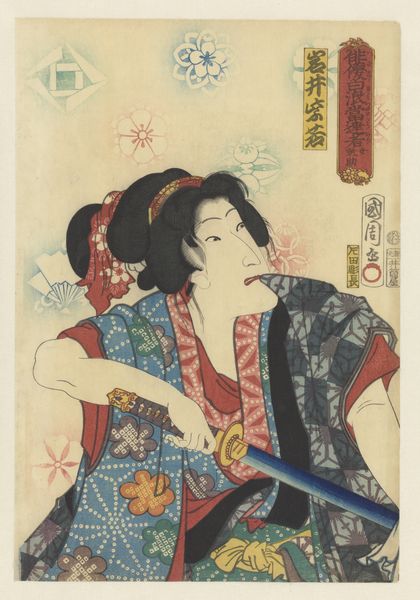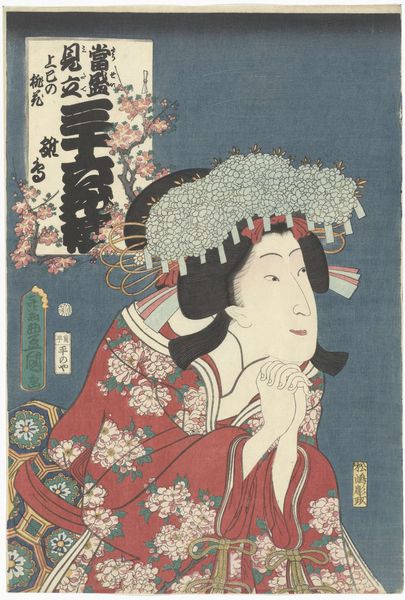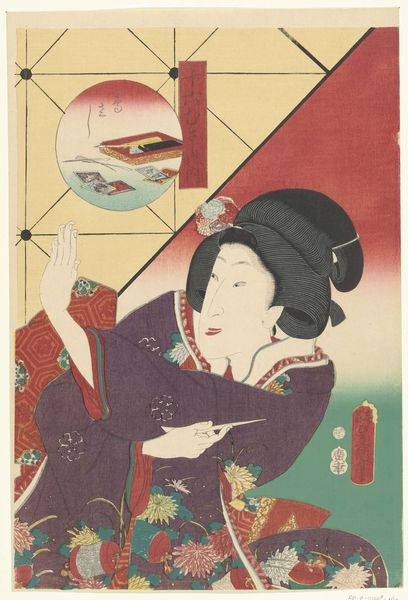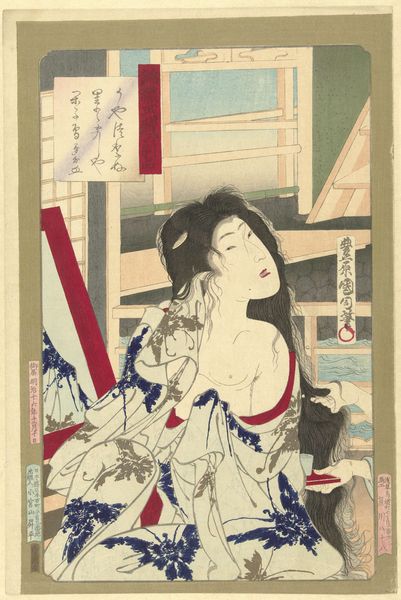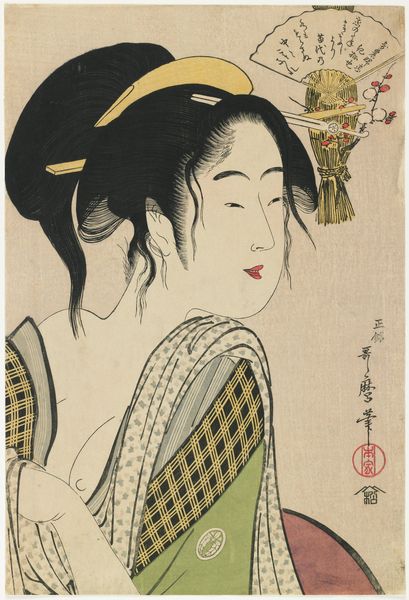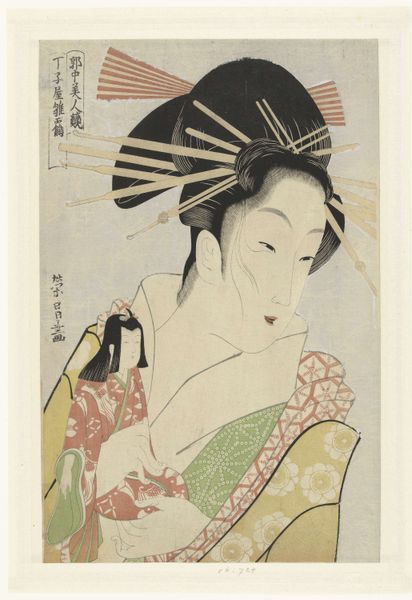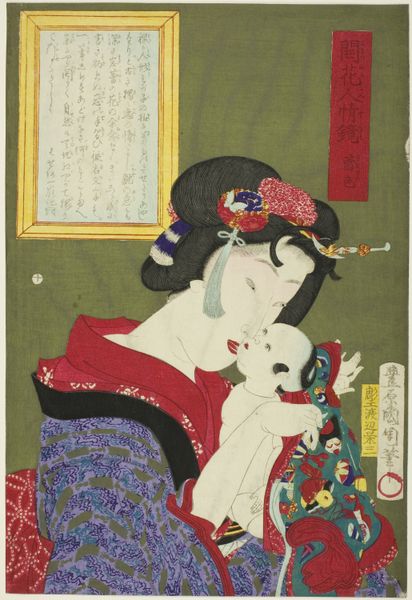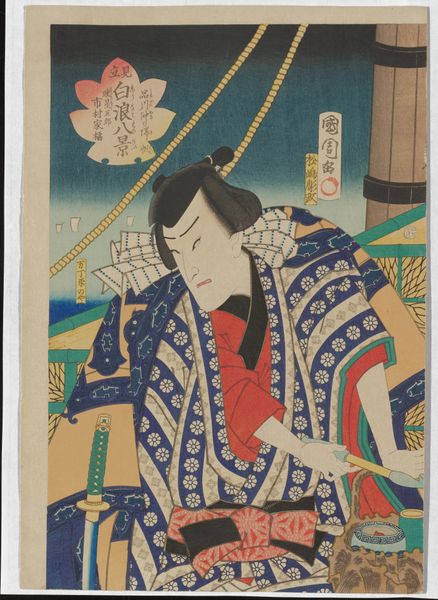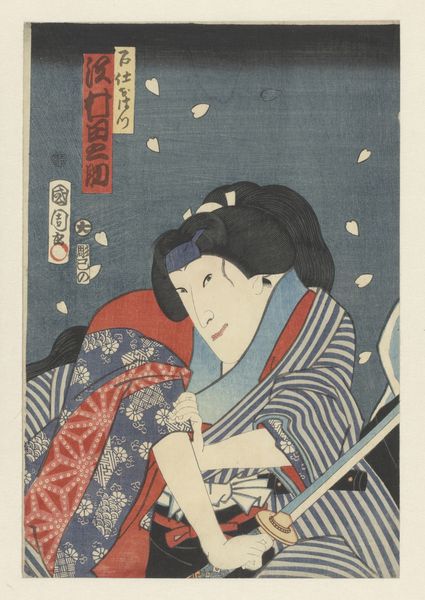
Evening Bell at Muenji Temple- Actor Sawamura Tanosuke III as Yukanba Kozō no Kichiza Possibly 1865 - 1867
0:00
0:00
print, ink
#
portrait
# print
#
ukiyo-e
#
japan
#
figuration
#
mural art
#
ink
#
genre-painting
#
watercolor
Dimensions: 15 1/8 × 10 3/8 in. (38.42 × 26.35 cm) (sheet, vertical ōban)
Copyright: Public Domain
Editor: Here we have "Evening Bell at Muenji Temple- Actor Sawamura Tanosuke III as Yukanba Kozō no Kichiza," possibly created between 1865 and 1867 by Toyohara Kunichika. It's a Japanese Ukiyo-e woodblock print. I find it quite striking—the actor's intense gaze and the bold tattoos clash with the delicate paper lantern. What do you see in this piece? Curator: I’m immediately drawn to the materials and the production process. Consider the woodblock print technique itself—the labour involved in carving the blocks, the layering of inks, and the registration required to create these images. Each step is a conscious decision that affects the final product. Notice how the artist employs flat planes of colour and strong outlines. What does that production method suggest to you about the role of "originality" here? Editor: It makes me think about accessibility. Were prints like this mass-produced and available to a broader public than, say, a painting would have been? Curator: Precisely! These prints democratized art to some degree. Consider the context: these images weren’t just aesthetic objects, but also commodities in a burgeoning consumer culture. Ukiyo-e prints circulated widely, documenting popular culture such as Kabuki theatre. Now, consider the portrayal of the actor: how does the artist highlight Sawamura Tanosuke's skill and persona, and how might that elevate or blur the lines between high art and commercial product? Editor: That's fascinating. It makes me think about how this print, through its materials and production, both reflects and reinforces the popularity of the actor and the Kabuki tradition he embodies. Curator: Indeed! We move beyond the purely aesthetic, towards a deeper understanding of artistic production as labor and consumption. Editor: I never thought about ukiyo-e prints as part of a commercial system before. Now I'm much more interested in the work involved and how it reached such a wide audience. Curator: That’s exactly the point: to examine the tangible realities behind artistic creation, and to recognize its integration into the everyday experiences of the time.
Comments
minneapolisinstituteofart almost 2 years ago
⋮
Since the 17th century, The Eight Views–originally referring to scenic spots around the Chinese Xiao and Xiang Rivers–has been a well-established theme in Japanese art. Here, the eight locales are taken from famous places in the city of Edo (present-day Tokyo) and are juxtaposed with popular actors in the roles of well-known thieves and robbers. Kabuki plays on the underworld were popular during the mid-19th century, especially during the hot summer months when this series was put on the market, as the storylines were meant to give viewers a chill.
Join the conversation
Join millions of artists and users on Artera today and experience the ultimate creative platform.
